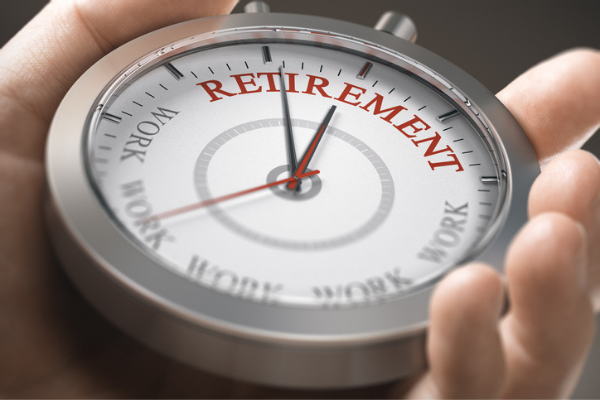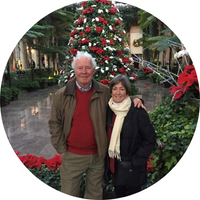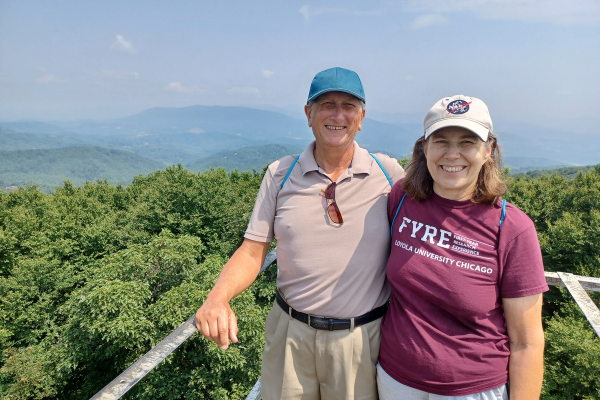
How was the transition from the working world to retirement?
The transition was easy because I managed it and anticipated it. I now enjoy myself reading historical fiction, playing golf and tennis, and (before the pandemic), traveling and doing things with my wife. The pandemic has challenged our new way of life in ways neither of us would have anticipated. Our active social life transformed into one of caution and a desire to stay at home. With luck (and increased levels of vaccination) that will change soon.
How do you stay connected to the chemistry enterprise as a retiree?
I still look at scientific literature, but not so much the technical journals such as JACS. I read Science and C&EN and use the ACS mobile App to peruse journal articles. I also keep up with colleagues in all three of my former employers, meeting for lunch and gossiping about how lucky we were to work when research was still appreciated and rewarded, and when companies still had pension plans.
Did you choose retirement? Or was it chosen for you?
I retired twice: the first time, I had been with my employer 30 years (at which point full pension kicked in) and I had reached age 58. There were many things I still wanted to do with my professional training and my remaining enthusiasm. I will get to my second retirement subsequently.
I had been in corporate research and done independent research, entered management and built a scientific reputation as well as a professional one based on ACS service at the local and national level.
After time in corporate research, I was given the opportunity to contribute in a commercial part of my company’s business and I discovered that I enjoyed customer interactions and business planning. I enjoyed this business exposure for five years and then was moved into several corporate roles, including one in new business development that had me seeking new opportunities for the company in technology areas that could broaden the technical base of one or more of our business units. I spent five happy years in these endeavors and decided that I would seek similar opportunities on my own. Hence retirement number one, in 2004.
I started my own consulting business (like many do), and did well for a few years, at which point I discovered that potential clients figure that you are passe and out of technical touch relatively quickly. Business slumped. My luck held: a former colleague called to ask if I would join him developing software that chemists could use to “test” polymer formulations before committing laboratory time to the concept. This was attractive to me at several levels and I readily accepted.
Within a year we had produced a commercially available package and began visiting potential clients based on my Rolodex from my previous employment. We were doing reasonably well, attending trade shows and technical fairs when the 2008 financial crisis hit. Our client base evaporated almost overnight as our technical contacts had their resources cut back. Again, luck stepped in.
I was approached by the principals of a small research company that was doing organic synthesis of optical materials for optoelectronic applications. Would I consider becoming their Chief Technology Officer and guide them into applications areas and allow them to grow? This sounds more impressive than it was since the company was comprised of only four chemists and operated out of a garage-like laboratory that needed a safety holiday. I readily accepted and worked to develop a patent base to support the company and an operational process-based system that would allow adding new chemists and growing to the point where we could hire a real CEO to further grow the company.
This little company was actually publicly traded over-the-counter, so there was also an opportunity to build equity in the company. I continued working with this company until about 2008, when I decided to lessen my connection to them and semi-retired as CTO to become a part-time “Scientific Advisor.” I continued with them for eight more years and saw the technical developments to a point where the company needed to concentrate less on R and more on D, in order to create a product base.
Hence my second retirement. The company has continued to grow, expanded their corporate footprint with a new headquarters with labs and cleanroom space, a set of full-time management and a board of directors set on success. In total, I worked 42 years, all of them enjoyable.
What’s your best advice for someone in their 20s/30s?
Current employees will have challenges we did not face, and their retirements may not be as facile as mine was. My advice to them is to be loyal but vigilant, and build contacts for all contingencies, and do not sacrifice your future foolishly. It is after all, your future.
Looking back, what do you wish you knew about retirement before you retired?
Working requires concentration on your specialties. On retiring I found the freedom to explore other scientific areas. I am learning molecular biology. Hey, it’s mostly chemistry.
What’s a travel destination you can’t wait to get back to?
The pandemic has upset many of our travel plans and inserted itself into our lifestyle. For a time we were nearly hermits, stuck at home and unable to travel freely. Masked, vaccinated and boosted, we now look forward to getting back on the road (or in the air). In past years we took an annual winter week or two on Grand Cayman. We have a yen to get back, and a few dollars put up to make it happen.

David F. Eaton retired in 2016 as Scientific Advisor to the Colorado-based start-up company Lightwave Logic, Inc., which is developing organic materials for applications in optical communications. He was Chief Technology Officer from 2005 until 2008. In early 2005, he became an associate with PrecisionCure, LLC, another Delaware-based company introducing productivity software for the radiation curing industry. He founded Light Insights, LLC, a technology-based business development service on retirement from DuPont in 2003.
Before leaving DuPont, Eaton was Technology Director, New Business Initiatives, within DuPont’s Electronic Technologies strategic business unit with responsibility for identifying and implementing new business opportunities in Photonics.
His education was obtained at Wesleyan University (AB, 1968) and Caltech (PhD, Organic Chemistry, 1972). He worked in areas of photochemistry and photoimaging during his career with DuPont. Most of his career was spent in DuPont Central Research and Development, where he was Research Manager for Photoscience. He moved to DuPont Electronics in 1999, after spending four years as Technology Director for DuPont’s Cyrel* Packaging Graphics Products business.
Eaton is the author of 90 research publications and reviews and has been granted 11 US patents. He is a Fellow of the Society for Imaging Science and Technology (IS&T), an AAAS Fellow, and an ACS Fellow. In 2016 he was the Delaware Section Awardee for his body of research in photochemistry and applications of materials science to optics.
This article has been edited for length and clarity. The opinions expressed in this article are the author's own and do not necessarily reflect the view of their employer or the American Chemical Society.










